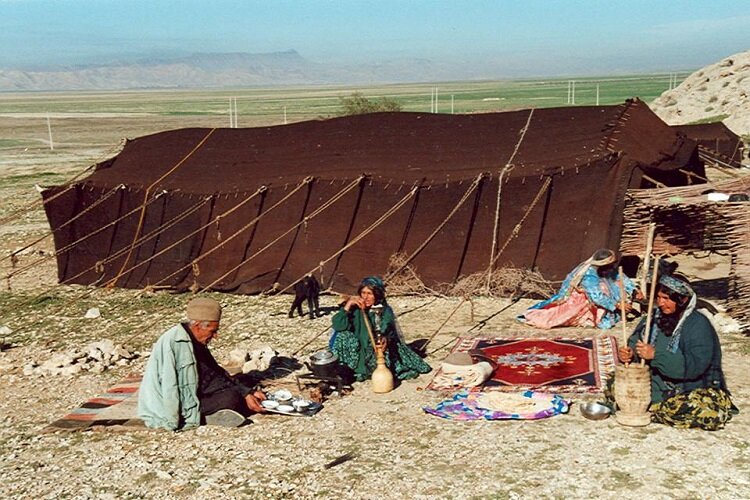Tribespeople from 15 Iranian provinces come together to show arts, souvenirs

TEHRAN - Tribespeople from 15 Iranian provinces have come together in Yasuj to showcase their arts, handicrafts, and souvenirs.
“The purpose of holding this festival is to introduce customs, nomadic lifestyle, and the culture of different tribes and clans of the country,” CHTN quoted a local tourism official as saying on Monday.
Visitors are offered to feel nomadic lifestyle, music, tribal literature and folklore, local dishes, and handicrafts within 15 Siah-Chadors (giant black tents), which have been pitched in the foreground, the official said.
The five-day exhibition will be running through July 14, he noted.
In modern Iran, there are still arduous paths, flattened by the feet of nomads and the hooves of their livestock in the ever-repeating movement of migration for millennia.
The ancient country has a culturally-diverse society dominated by a wide range of interethnic relations. Native speakers of Persian (Farsi language) are considered as the predominant ethnic generally of mixed ancestry, and the country has important Turkic, Kurd, and Arab elements in addition to the Lurs, Baloch, Bakhtiari, and other smaller minorities such as Armenians, Assyrians, and Jews.
Experts say that ethnic tourism provides the ground for potential sightseers to feel like indigenous people by living with a nomad or rural family or enjoying an independent stay. However, as the name implies, it’s a trip for recreational purposes rather than an expedition for anthropological research.
Migration is a way of life for nomads because herding cattle is their main source of income. In spring they with all their belongings head for the cooler pastures usually on mountain hillsides where the grass is abundant for their flocks of sheep and goats. And in autumn they return to previous tropic plains as their well-fed livestock get stronger to bear the winter.
Staying with nomads during their migration, even for a day or two, might be a lifetime experience. As a traveler, one has the chance to visit, live, eat, and sleep in a nomadic camp with a real nomad family. Colorful dresses, vast black tents, colored-eyed children with rosy cheeks, modest lifestyle, scenic landscape, and local dishes are probably among the delights of such visits.
Language, music, indigenous cuisine, clothing, songs, anecdotes, crafts, live performances, and local rituals such as celebrations and wedding ceremonies have always spurred many to experience life among the tribes.
The majority of the Iranian nomads use mobile internet, cell phones, etc as they still set up their tents on the flanks of the snow-capped mountains. And these days cars and rented trucks, rather than domestic animals, bring them, and their flocks to pastures high up on the highlands and vice versa.
Usually, nomads surprise visitors with the dignity in their rough and overworked hands and integrity in their compassionate eyes at first sight. In popular Iranian culture, literature, and public opinion, nomads have always been a proud part of the nation.
AFM
Leave a Comment